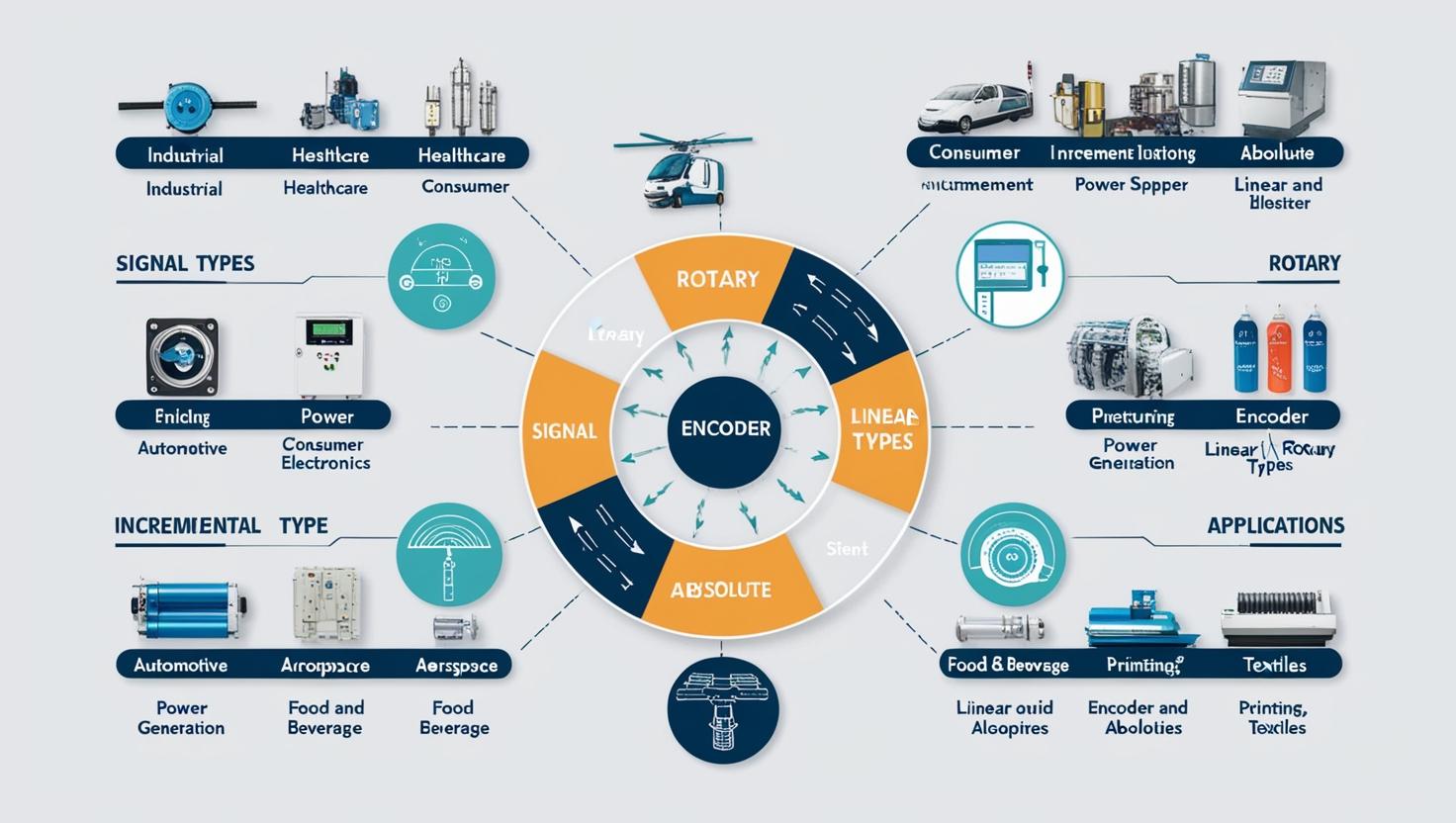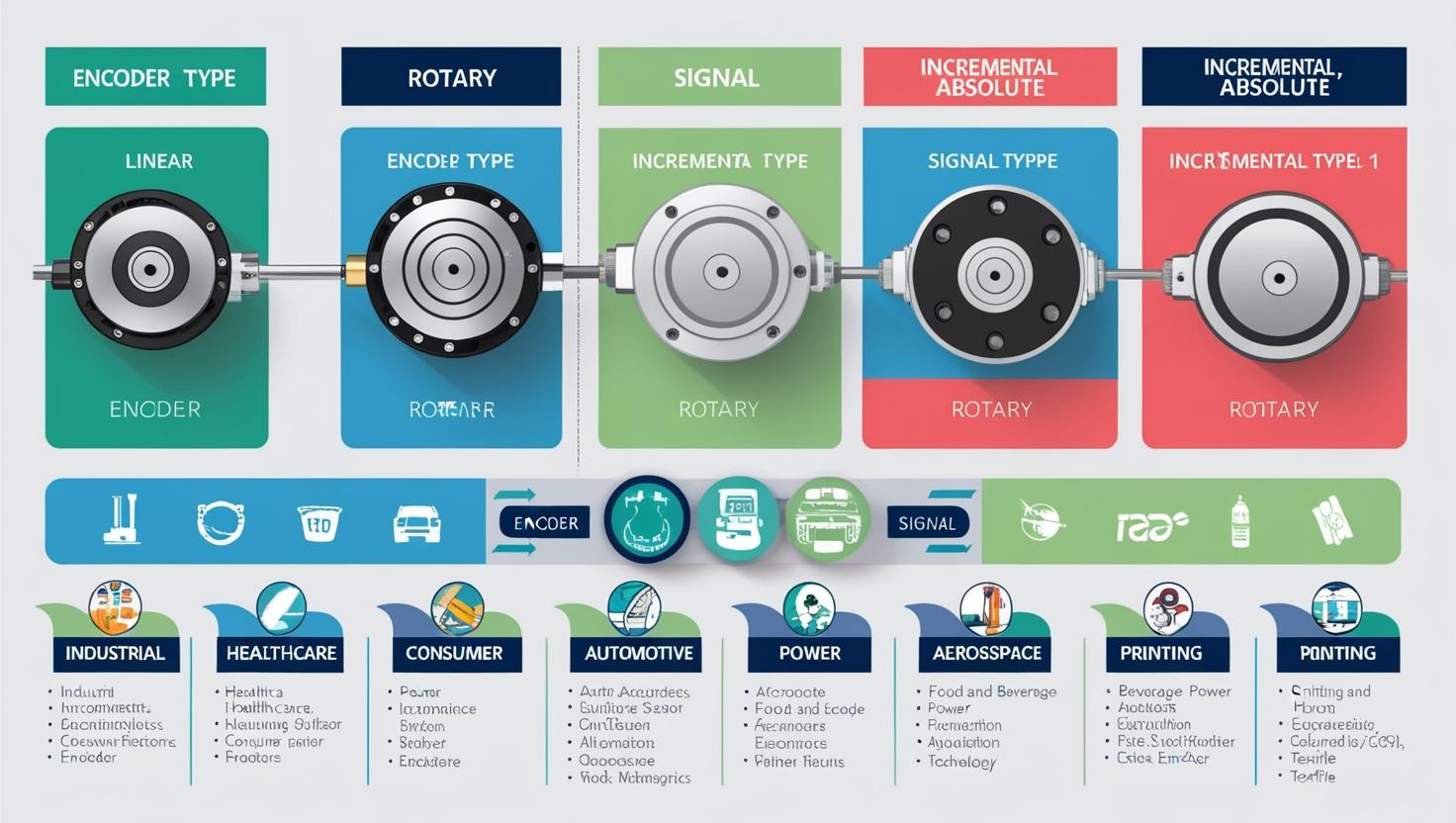The encoder market in the Asia Pacific region is poised for significant growth, making it one of the fastest-growing markets globally. With a variety of emerging industries and increasing demand for advanced technologies, Asia Pacific is expected to maintain its position as the largest market for encoders throughout the forecast period. Countries such as China, Japan, South Korea, and India are playing key roles in driving this growth, thanks to their expanding industrial sectors and technological advancements.
The encoder market is projected to grow from USD 2.7 billion in 2023 and is projected to reach USD 4.5 billion by 2028; it is expected to grow at a CAGR of 11.0% from 2023 to 2028. The increasing adoption of encoders in energy harvesting applications and the growing expansion of automotive markets worldwide are among the key factors driving the encoder Industry . Furthermore, innovative technologies in the automotive and UAV industries are expected to create lucrative opportunities for the Industry .
Key Drivers of Market Growth in Asia Pacific
- Manufacturing and Engineering Hubs: The rapid expansion of manufacturing and engineering hubs across the region is a major contributor to the encoder market’s growth. Asia Pacific is home to a high concentration of industries like electronics, automotive, robotics, and industrial automation. Encoders are vital components in many manufacturing processes, ensuring precise motion control and enabling the automation of various production lines. As manufacturing technologies continue to evolve, the need for high-performance encoders will continue to rise.
- Rise of Electric, Autonomous, and Connected Vehicles: The automotive industry in Asia Pacific, especially in China, is undergoing a rapid transformation, driven by the rise of electric vehicles (EVs), autonomous vehicles, and connected car technologies. Encoders play a crucial role in automotive applications, including steering, braking, and engine control systems. As the demand for next-generation automotive technology increases, so too does the need for high-precision motion control devices like encoders. The Asia Pacific region, being a hub for automotive innovation, is expected to witness significant demand for encoders in the years to come.
Download PDF Brochure @
https://www.marketsandmarkets.com/pdfdownloadNew.asp?id=14566162

- Technological Advancements in Robotics and Factory Automation: Asia Pacific, particularly China, has become a hotspot for emerging technologies such as robotics and factory automation. The rapid adoption of robotic systems in manufacturing plants and other industries relies heavily on encoders for motion sensing and feedback systems. These encoders enable robots to perform tasks with high accuracy and efficiency. As factories continue to modernize with automation and robotics, the encoder market in the region is set for exponential growth.
- Industrial Modernization in Taiwan and India: Both Taiwan and India are quickly adopting automation technologies to modernize their industries. In Taiwan, the semiconductor and electronics sectors are seeing significant growth, where encoders are critical in ensuring precision in manufacturing processes. Similarly, India’s growing focus on industrial modernization, particularly in manufacturing, automotive, and energy sectors, is driving the adoption of encoders. The use of encoders is seen as a vital enabler of efficient, modernized production systems.
Country-Specific Insights
-
China: As a global manufacturing powerhouse, China is a critical player in the growth of the encoder market. The country’s push towards advanced manufacturing, robotics, and smart factories is a key driver. Additionally, China’s focus on electric and autonomous vehicles has further fueled demand for encoders in the automotive sector.
-
Japan: Japan’s long-standing position as a leader in automation, robotics, and precision manufacturing has greatly contributed to the encoder market in the region. With some of the largest industrial automation companies headquartered in Japan, the demand for encoders in applications like robotics, motion control systems, and factory automation is substantial.
-
South Korea: Known for its strong electronics and automotive industries, South Korea is another key player in the encoder market. With a heavy focus on smart manufacturing and robotics, South Korea’s industrial sectors continue to drive demand for high-precision encoders.
-
India: India’s growing adoption of Industry 4.0 practices and increasing investments in automation technologies across various sectors have made it a promising market for encoders. With a robust focus on manufacturing modernization and smart factories, India is expected to experience strong market growth in the coming years.

Market Opportunities and Future Trends
As industries in Asia Pacific continue to evolve, there are several opportunities for growth in the encoder market:
-
Integration with IoT and AI: The increasing integration of Internet of Things (IoT) and Artificial Intelligence (AI) technologies into manufacturing processes opens new opportunities for encoders. These technologies allow for greater data collection, analysis, and predictive maintenance, enhancing the value of encoders in industrial applications.
-
Advancements in Encoder Technologies: The market is also witnessing advancements in encoder technologies, such as optical encoders, magnetic encoders, and rotary encoders. These innovations are enhancing performance, offering more reliable and accurate solutions for industries with stringent precision requirements.
-
Growing Demand for Automation: The global push for automation across various sectors, including manufacturing, logistics, and automotive, will continue to create demand for encoders. As more industries adopt smart technologies and automation solutions, the need for precise motion control devices, such as encoders, will rise.
The encoder industry in Asia Pacific is set to experience rapid growth, driven by the region’s expanding manufacturing and industrial sectors, technological advancements, and growing demand from the automotive and automation industries. Countries like China, Japan, South Korea, and India will continue to be major players in the market, creating opportunities for encoder manufacturers to expand their reach. As industries embrace advanced technologies like robotics, factory automation, and electric vehicles, the role of encoders as key enablers of precision and efficiency will remain critical. With continued investments and innovation, the encoder market in Asia Pacific is expected to flourish in the coming years.
Frequently Asked Questions (FAQ) – Encoder Market in Asia Pacific
1. What is driving the growth of the encoder market in Asia Pacific?
The growth of the encoder market in Asia Pacific is primarily driven by the expansion of manufacturing industries, technological advancements in automation, robotics, and the rise of electric, autonomous, and connected vehicles, particularly in countries like China, Japan, South Korea, and India.
2. Which countries in Asia Pacific are contributing the most to the encoder market?
Key contributors to the encoder market in Asia Pacific include China, Japan, South Korea, and India, due to their strong industrial sectors and adoption of emerging technologies like robotics, automotive, and factory automation.
3. How are encoders used in the automotive industry in Asia Pacific?
Encoders are crucial in the automotive sector for applications such as steering, braking, engine control, and powertrain systems. The growing demand for electric, autonomous, and connected vehicles in Asia Pacific is increasing the need for high-precision encoders in these systems.
4. Why is the encoder market growing in India and Taiwan?
India and Taiwan are experiencing strong market growth due to their focus on modernizing manufacturing industries, adopting Industry 4.0 technologies, and investing in smart factory automation. Encoders are essential in improving precision, efficiency, and automation in these sectors.
5. What technological advancements are influencing the encoder market in Asia Pacific?
The integration of IoT (Internet of Things), AI (Artificial Intelligence), and advancements in encoder technologies such as optical, magnetic, and rotary encoders are significantly enhancing the capabilities of encoders, driving the market forward in Asia Pacific.
6. How do encoders improve manufacturing and automation processes?
Encoders play a vital role in manufacturing and automation by ensuring precise motion control, enabling machines and robots to perform tasks with high accuracy. This leads to enhanced productivity, lower error rates, and more efficient production processes.
7. What are the future trends for the encoder market in Asia Pacific?
The future of the encoder market in Asia Pacific will be shaped by continued advancements in automation, robotics, and smart manufacturing. The growing demand for electric vehicles, AI-powered systems, and Industry 4.0 technologies will further drive the adoption of encoders across various industries.
8. How does the encoder market align with the trend toward automation in Asia Pacific?
As more industries in Asia Pacific, such as manufacturing, logistics, and automotive, embrace automation technologies, the demand for encoders increases. Encoders are essential for enabling precise motion sensing, feedback, and control in automated systems.
